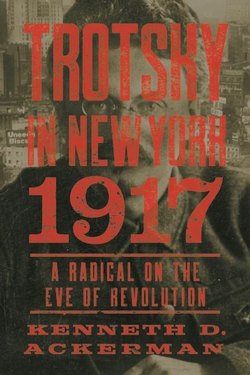Читать книгу Trotsky in New York, 1917 - Kenneth D. Ackerman - Страница 13
На сайте Литреса книга снята с продажи.
Оглавление6
PATERSON
ALEXANDRA KOLLONTAI TOOK the train back to Paterson, New Jersey, after the Monday night dinner at Ludwig Lore’s Brooklyn apartment. During the ride and the next day, she stewed over what she’d heard. Besides the pleasant company, the chance to chat with Lily Lore and her Russian friends, the argument between Bukharin and Trotsky had dominated the night and it bothered her. Kollontai took her Bolshevism seriously. She didn’t view ideological arguments as simple games, intellectual sparring for its own sake. She had agreed strongly with Bukharin, that American leftists should split from the conservative American socialists and form their own new party. She had seen the American leaders like Morris Hillquit; they were no revolutionaries.
And Trotsky had stood in the way. Trotsky had undercut Bukharin, contradicted him in front of the entire group. It was Trotsky’s fault. Trotsky, it seemed, always felt as if he had to win the debating point, whether he understood the issue or not.
Kollontai had grown cynical with America during her two trips and looked forward to leaving soon for Norway. Looking at the New York skyline, she now described it not as towers of wonder but instead as “huge, twisting, relentlessly upward-thrusting lines.” In the Statue of Liberty she saw disappointment, “an old and forgotten legend, a fairy tale of pre-capitalist times which can only be recounted from the reminiscences of our grandfathers.” In her writing, she lamented strikers beaten by police, starving housewives, corrupt courts, and a “servile” press.130
Much of this was the usual stuff of socialist propaganda, but from Kollontai it rang tired and resigned.
She saved her worst criticism for New Jersey. “New York City is surrounded by the Styx,” she wrote in one letter, conflating the American slang for rural areas with Dante’s famous river, across which lay the inferno. “We’re living in an area [Paterson] at the edge of town, divided by straight little streets lined with maple trees. Along these streets stretch identical rows of clapboard houses with porches, where women freed from their house work in the evening sit on rocking-chairs and chat. They look so bored.”131
After a day or two back in Paterson, Kollontai finally put pen to paper and addressed a letter to Vladimir Ilyich Lenin in Switzerland. She quickly got to the main point, the meeting at Ludwig Lore’s apartment and the blowup with Trotsky: “The Dutch Comrade Rutgers (a Tribunalist), Katayama, and our group have taken a step toward the ‘Zimmerwald left,’” she wrote. “However, Trotsky’s arrival strengthened the right wing [always the enemy in Lenin’s eye] and by the time of my departure the platform had not yet been adopted.”132
In her letter, she also told Lenin about Bukharin, how he had won acclaim at Novy Mir since settling in New York City, but that Trotsky’s arrival threatened to eclipse him there.
She knew Lenin would be angry. Did Bukharin push her to write her letter? Probably not. Bukharin showed no sign of having been cross with Trotsky over their argument/debate at Lore’s apartment. If anything, he and Trotsky both seemed to enjoy it. Either way, she felt duty-bound to keep Lenin informed. She sent the letter off to Switzerland, not knowing how long it would take to get there, maybe weeks. By then, she might be out on the ocean on a ship herself, headed home.
